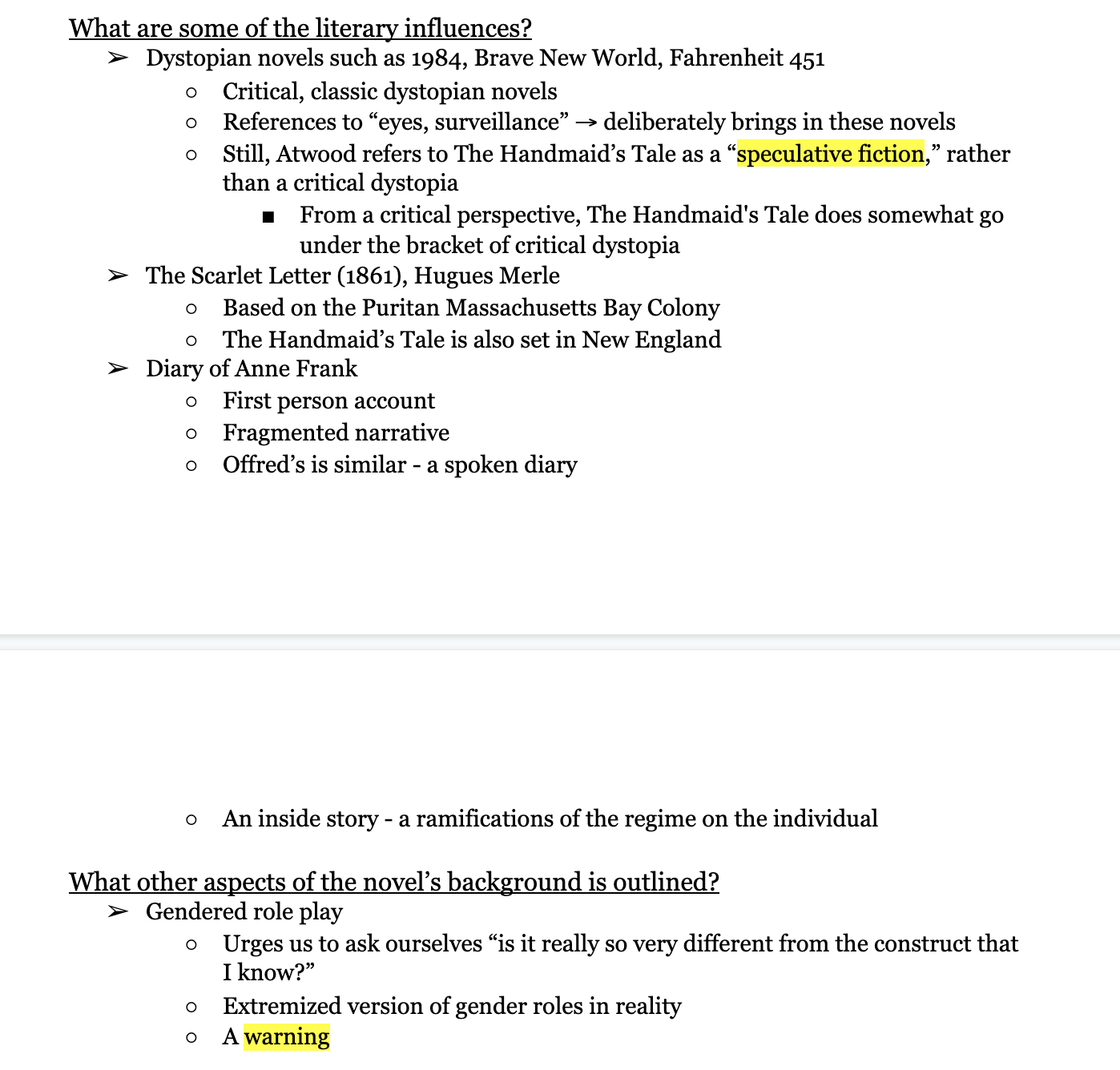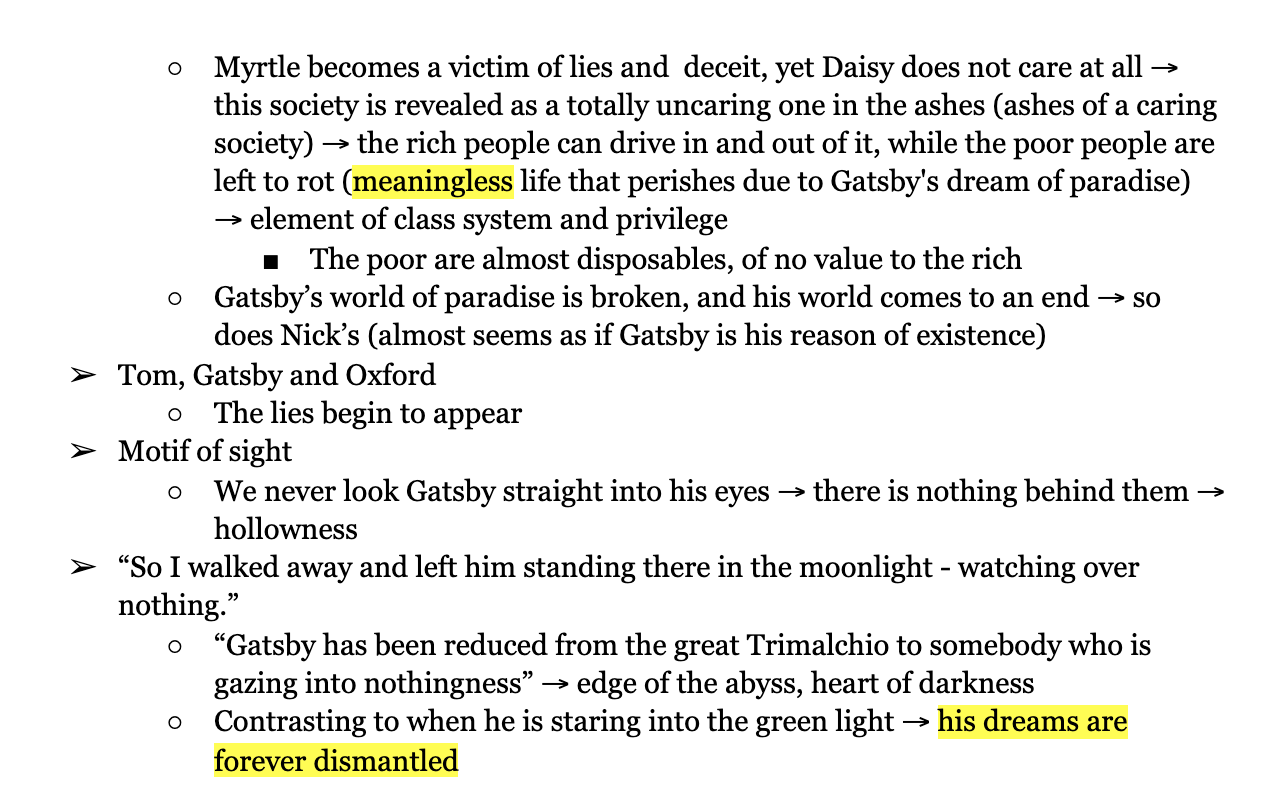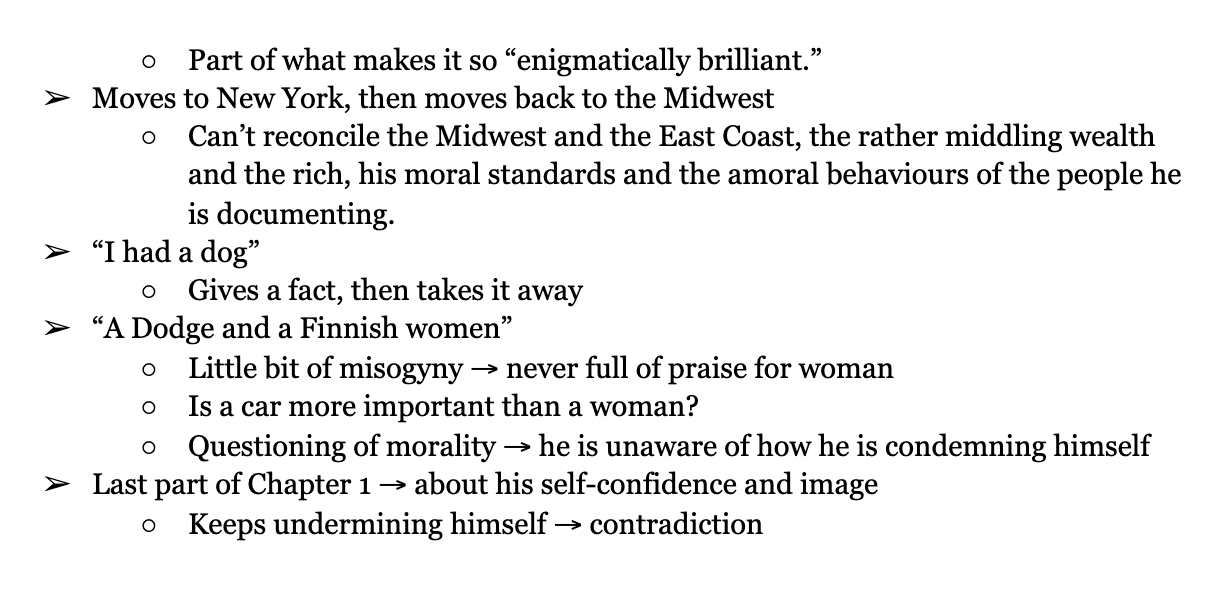

ELP
How is power distributed in Gilead?
ELPVision is a prime medium through which power is distributed. Handmaids, due to their wings, are limited in their peripheral vision, while virtually being forced to look “downwards,” as they are unallowed to meet anyone’s eyes. Unable to see anyone in the eyes, their freedom to communicate is severely compromised, therefore their power as well. In chapter five, she avoids eye contact with foreigners – Japanese tourists – though they are not even part of the Gilead regime. Perhaps, even looking at a foreigner is too much of an escape. Looking at their casual dressing, Offred calls it “freedom.” The act of looking alone is enough to connote freedom and power for Offred.
In the rare opportunity when Offred does get the gaze at someone, she feels a sense of power. In chapter 15, when she stares at the commander, she thinks to herself: “watch out, Commander… I’ve got my eye on you.” The commanding tone not only shows her determination to catch “softness” within the commander, but also exudes a sense of control, albeit superficial. The rare opportunity to examine the Commander’s features – from his “sensitive thumb” to his “delicate stalked slug’s eye” – seems to empower her as if she is seeing through someone. Furthermore, Handmaids are also under the threat of being watched by the Eyes, spies who search for any rule-breakers in Gilead. This leads to fear, and a limitation in their behaviors and freedom, once again leading to less power. Gilead manipulates vision as a means of control. Both the inability to see and the possibility of constantly being watched lead to less power.
Similar to vision, the freedom to read is another medium through which power is distributed. In chapter 15, watching the Commander read out the Bible, Offred notes that “he has something we don’t have, he has the word.” Perhaps, what she refers to as what she does not have is not only the freedom to read, but also overall power itself. Even store signs are pictures with no words. Even a little bit of lingual communication is a potential source of dissent for Gilead, and when it is used, it is for the purpose of religious and political indoctrination.
In what ways is the control of women’s bodies reflective of the totalitarian control of the regime in Gilead?
ELPThe body, which was originally a device of autonomy, an instrument for “transportation” and “accomplishments,” is degraded to a mere walking womb due to the totalitarian regime of Gilead. Offred calls herself a “cloud,” representing her loss of identity, dissipated into a vague memory. Now, it’s “congealed around a central object,” her womb. Her body, which was an instrument of freedom, is now degenerated and simplified into serving sexual functions. This control the state possesses over women shows the sheer level of surveillance and intrusion of Gilead. From not only political control, to now controlling the bodily sovereignty of women. With individual identity almost eradicated, Gilead ultimately creates a society in which women are just chess pieces serving their designated roles, nothing more.
The Handmaid’s Tale Notes
ELP



Saint Hoax Reflection
ELPSaint Hoax critically portrays Trump as an alarming figure, the harbinger of obsolete patriarchal ideals of America. In one of his artworks, Saint Hoax quotes “For a man to be successful he needs support at home, not someone who is always griping and bitching.” This controversial quote by Trump reduces the independent opinion and thinking of women to simply “griping and bitching,” perhaps reflective of the degrading attitudes towards women in mid-20th century America. The quote is also representative of toxic masculinity, the need to keep the opposite gender simply as servants with no independent thought. In the same artwork, a woman who seems fulfilled by serving his husband is depicted, illustrative of Trump’s ideals of a male-centric society. Therefore, by superimposing and recontextualizing Trump’s quotes in vintage adverts, Saint Hoax deems Trump as a leader fitting for the backward past, not the present where we should be advocating for a more equal, respectable social landscape.
Gatsby notes – Chapter 6 and 7
ELPGreat Gatsby notes
ELPG11 Exams – Reflection
ELPThe first key takeaway from this exam is my lack of specific terminology. My writing would have been more elevated had I pinpointed ideas such as “typography,” “composition” and “visual metaphor.” Also, while my analysis of the patriotic aspect of the advertisement was good, I certainly could have taken other aspects of the advertisement a further step. In hindsight, I could have mentioned something like this: “While the environmental-friendly stance Chevrolet intends to take is appealing, there is a paradoxical element to this alignment. A car manufacturer, one of the prime causes of pollution, positioning themselves as those who care for the environment could be seen as questionable by many.” Furthermore, I need to analyze more on the composition and the layout of the advertisement. Something like: “The car’s size, which appears smaller than the Earth, symbolically reinforces Chevrolet’s eco-friendly stance, intentionally placing Earth at a position of higher importance.” Nevertheless, it is great to have a clear idea of my areas for improvement, allowing me to take the next step in my writing in the right direction.
In what ways can Thetis be understood as a poem about transformation and power?
ELPThe element of transformation present in Thetis can be understood in many different ways. It especially becomes pronounced in the last stanza, which ambiguously discusses Thetis’ transformation into a mother. A possible interpretation is that perhaps, the transformation that seems the least liberating – motherhood – is actually the most liberating one. Thetis’ acceptance of motherhood may be her changing the definition of liberation itself, succumbing herself to a new identity. Some view that motherhood is actually forced upon her, extending her entrapment. Regardless, Duffy reveals a power dynamic between Thetis and the pursuer. Despite her efforts to evade through various forms of transformation, Thetis is always caught by the pursuer who adapts. The male partner is always in control of the woman, no matter the attempts of escape. Perhaps, Duffy is presenting a resigned view that the changes we make as an individual only prolong our fights and some power dynamics cannot be changed, only accepted.
In what way do the films in the #TalkAboutBias campaign challenge racial bias in America?
ELPThe #TalkAboutBias campaign uses a series of three advertisements, The Talk, The Look, and The Choice to discuss racism and bias (obviously). The Talk shows a montage of vignettes from various time periods of modern America, displaying the circularity of racism. It aligns P&G as an organization that sympathizes with the struggles black people have faced throughout the history of America. The Look is probably the advertisement most directly related to the aspect of bias, displaying the day-in-the-life of a black protagonist. It questions the biases and predicaments black people commonly face, and even urges the audience to question their own tacit biases. Finally, the Choice, in relation to the Black Lives Matter movement, places emphasis on white privilege and the sense of obligation they have to become anti-racist. Overall, there is a progression of historical enlightenment, reflection on our own biases, and finally, a call to action: to protest, to vote, and to step up.










